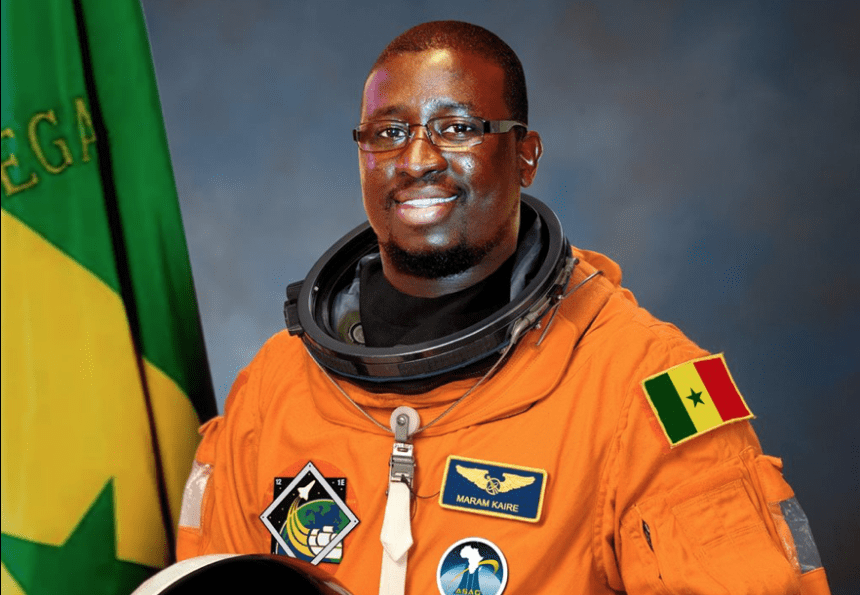BLOGOSPHERE
SENEGAL – Last news from the Comos: The Asteroid “MaramKaire” on the approach

There is no need to observe the sky in the hope of seeing a ball of fire hurtling at lightning speed on earth. You will only see dust – stars or in the best case shooting star charms. The scientific community has just undergone a massive revolution in astronomy and space science. If Thomas Pesquet has drunk us with his delusional photos from the space station, we are back on our feet. Among the 200,000 asteroids awaiting their baptismal name. The International Astronomical Union (IAU) wanted to honour Africa through the Senegalese astronomer Maram Kairé, by naming an asteroid after him. Camille, Ursula, Bush, Ratzinger,… will receive at their side a brand host: “Maramkaire”.
Until yesterday, I thought it was hard as a carbon chondrite that anyone could buy an asteroid in the sky for a few subsidies to needy discoverers who were struggling to make ends meet. I screwed up. On a high note, as always, I admit. Having his name in the sky is no small feat. However, Maram Kairé has nothing to worry about; he is already in the sky. And in a good place on the asteroid belt.

Entrepreneur, manager, communication consultant, expert in systems & networks engineering, president of the Senegalese Association for the Promotion of Astronomy, 1st Ambassador in Africa of the Science and Technology Values Campaign from the ONOMO Group, 1st Mymusic Online Prize for the Best Webdesigner of Senegal on 30 August 2008, Chevalier de l’Ordre National du Lion du Senegal, TOP 500 of the most influential Africans in the world, Former Technical Advisor in the Office of the Minister of Higher Education, Research and Innovation of Senegal. Responsible for the promotion and popularization of scientific culture and space issues… Without turning them into coffers, such skills are not within the reach of all ambitions. To access only one of these titles, you have to be a little more than a worker. Senegalese Maram Kairé “has a solid grasp of how to integrate solutions in a variety of environments, as well as project management, emergencies and complex cases,” he says on his Linkedin account.

This young astronomer, the first African to give his name to an asteroid, was born in Dakar, Senegal, in 1978. Maram Kairé studied BTS Informatique et Gestion at the École Supérieure Polytechnique Dakar. He studied Computer Engineering in France at ESG Management School from 1998 to 2002, after which he obtained the title of Systems & Networks Engineer. Maram Kairé could have had a brilliant career in teaching, but a vocation he had since childhood attracted him to astronomy: the books of the outstanding astrophysicist, Hubert Reeves, were his bedside books. He therefore followed the line, which although long, is the shortest still from one point to another. He looks into the sky, the stars through gigantic research telescopes.
Discovered on 27 February 1998 by the Frenchman Alain Maury, this asteroid was first given the provisional designation: 35462, then its definitive name “Maramkaire”. Next step: a full astronomer position.

BLOGOSPHERE
TECHNOLOGY – NASA publishes a panoramic photo of Mars taken by the rover Perseverance

The rover Perseverance landed on Mars on February 22, 2021. A historic moment that went around the world. Since then, NASA has released the first sound from the planet Mars and captured by the aircraft. The latest publication dates from Wednesday and it is that of a panoramic photo of the red planet reconstructed from several photographs taken by the rover.
The rover Perseverance has been busy since landing on Mars on Monday. After a black and white photograph of the red planet, the video of the rover’s landing was revealed by NASA. The US Space Agency released a spectacular panoramic photo of Mars on Wednesday. It shows the crest of the Jezero crater which, according to scientists, contained a deep lake into which a river was flowing about 3.5 billion years ago. The vehicle took 142 360-degree shots with the high-definition cameras installed on its mast.
“We are set up on a very good site, where we can see very similar characteristics to those found by Spirit, Opportunity and Curiosity (three other rovers that preceded Perseverance on the red planet) on their landing zone,” said Jim Bell, of the University of Arizona.
One shows the deployment of the supersonic parachute, another, located under the rover, the Martian ground approaching, and two views capture the rover gradually deposited on the ground, suspended by three cables from the descent stage. “This is the first time we have been able to capture an event like a landing on Mars,” said the director of the legendary Jet Propulsion Laboratory where rover Michael Watkins was built at a press conference. “ “This is really fantastic!” he exclaimed.
The rover was protected by a thermal shield as it entered the atmosphere at a speed of 20,000 km/h, marking the beginning of the “seven minutes of terror” to the ground. On the video of the landing, we can see this shield dropped on the surface of Mars. Eight retrorockets then finished slowing down the vehicle, and Martian dust is propelled in large quantities under their effect. Once the rover is stationary, we can also see the descent stage perform a final thrust to crash 700 meters further. “These images and videos are what we’ve dreamed of for years,” said Allen Chen, who is in charge of the landing phase for NASA.
NASA also wanted to capture the sound of the dizzying descent, but it didn’t work. However, an extraordinary audio, recorded once the rover landed on the surface of the red planet, was unveiled by NASA. In the extract, we can hear a strident sound produced by the rover, but also, clearly, the Martian wind. “We are hopeful that we can continue to use these microphones to capture sounds,” said Dave Gruel. “ However, their life expectancy is limited due to extreme temperatures on Mars.The expedition of the rover Perseverance on Mars aims explicitly to find traces of ancient life on the red planet, collecting for at least two years up to thirty rock samples. The vehicle’s cameras will help scientists determine the geological history and atmospheric conditions of the crater, and identify the rocks and sediments that will be collected before being transported to Earth on a future mission, scheduled for the 2030’s.
-

 EAST AFRICA1 year .
EAST AFRICA1 year .TANZANIA – President meets with Chairman of the Board and CEO of the Merck Foundation
-

 CULTURE1 year .
CULTURE1 year .AFRICA – African writers and artists celebrate the 20th anniversary of the African Union
-

 BUSINESS8 months .
BUSINESS8 months .GUINEA – Authorities demand repatriation of mining revenues
-

 CULTURE3 years .
CULTURE3 years .SENEGAL – “Sadik Lady” by Viviane Chidid
-

 CULTURE1 year .
CULTURE1 year .SENEGAL – Massamba Guèye wants to democratize the story
-

 IMMIGRATION9 months .
IMMIGRATION9 months .AFRICA – Migrant smuggling brings 59 billion CFA francs to smugglers per year
-

 CULTURE2 years .
CULTURE2 years .SENEGAL – Thiéboujeun inscribed on the World Heritage Site
-

 A LA UNE3 years .
A LA UNE3 years .GUINÉE: Manchester United: Paul Pogba absent several weeks



